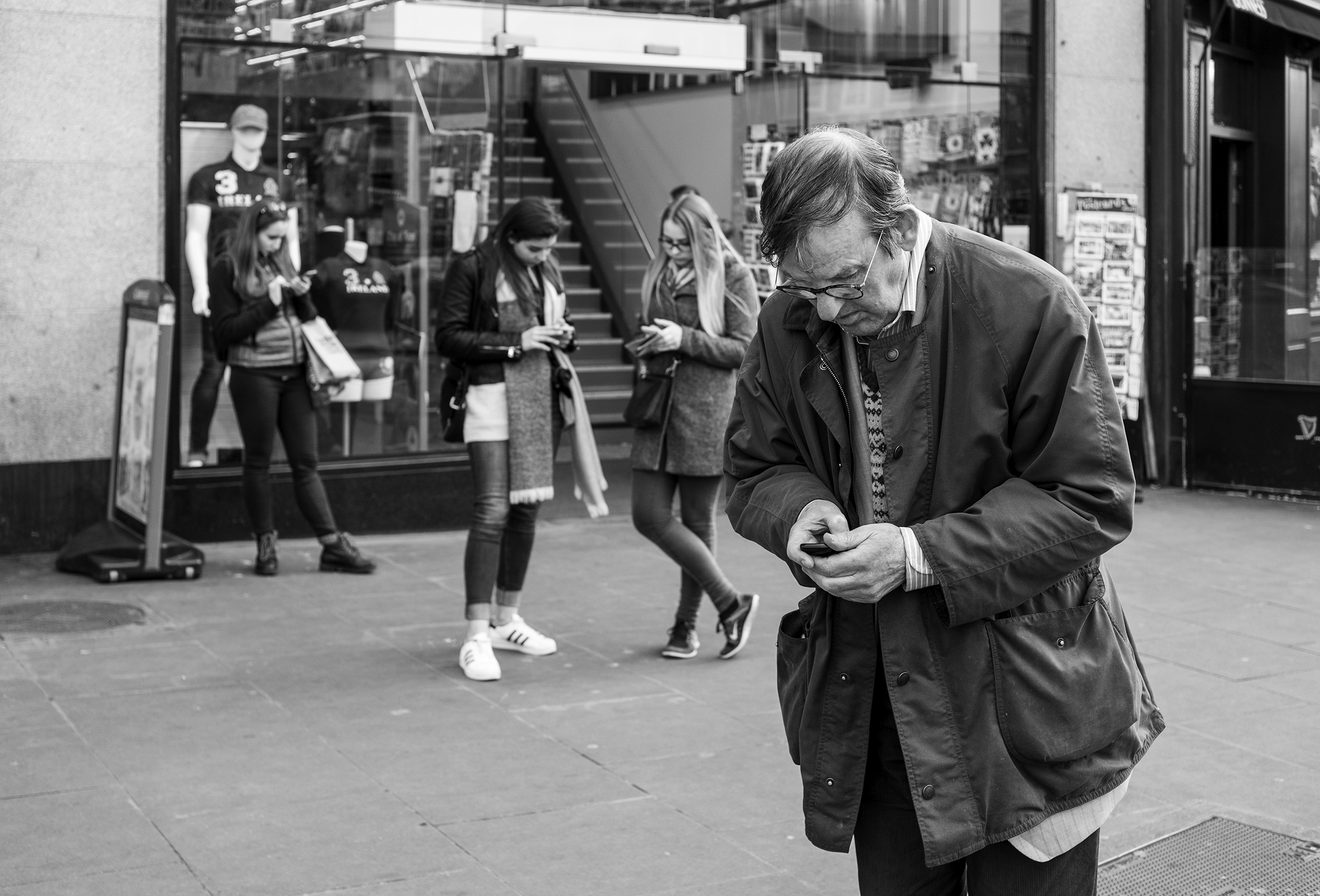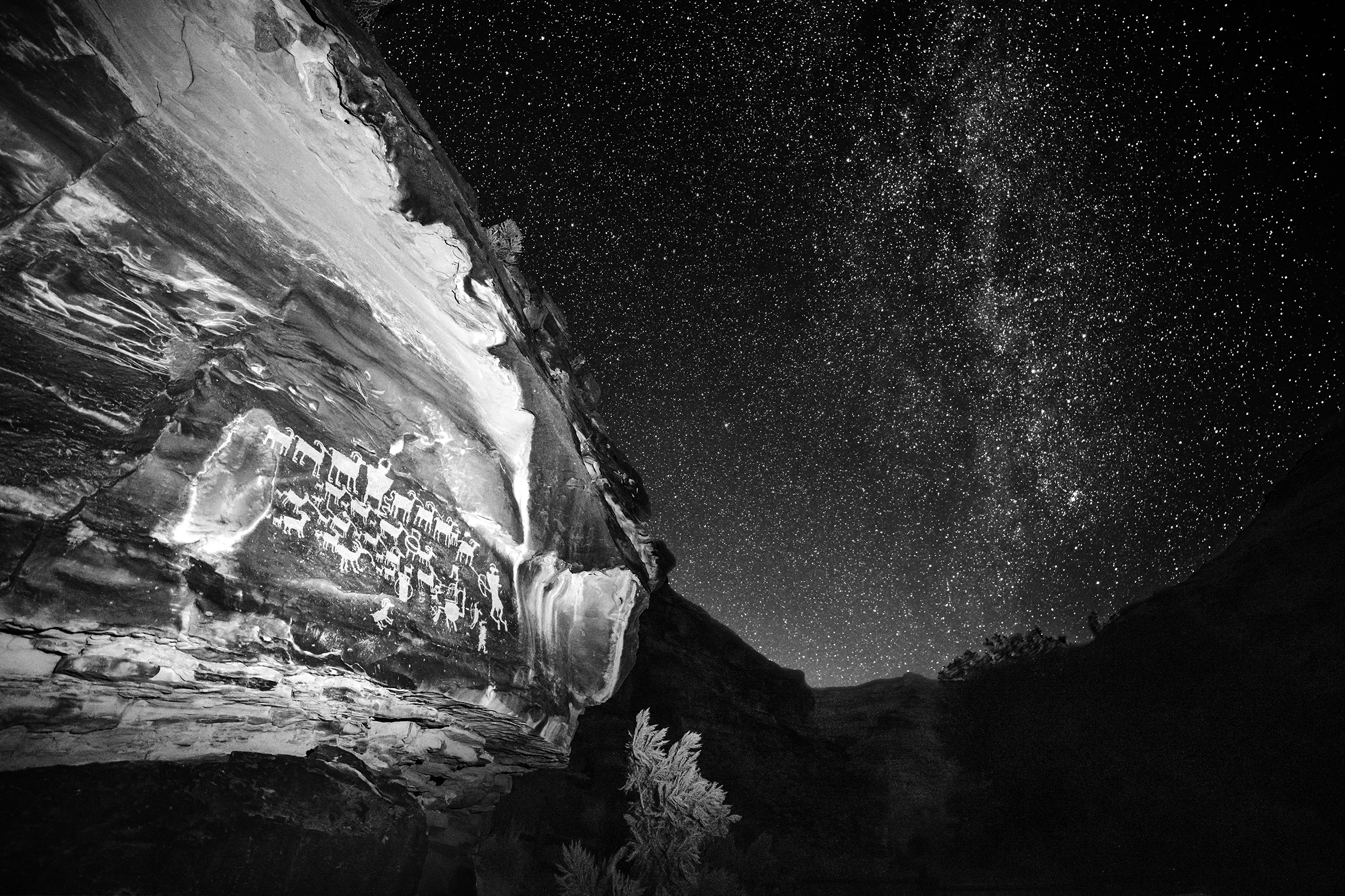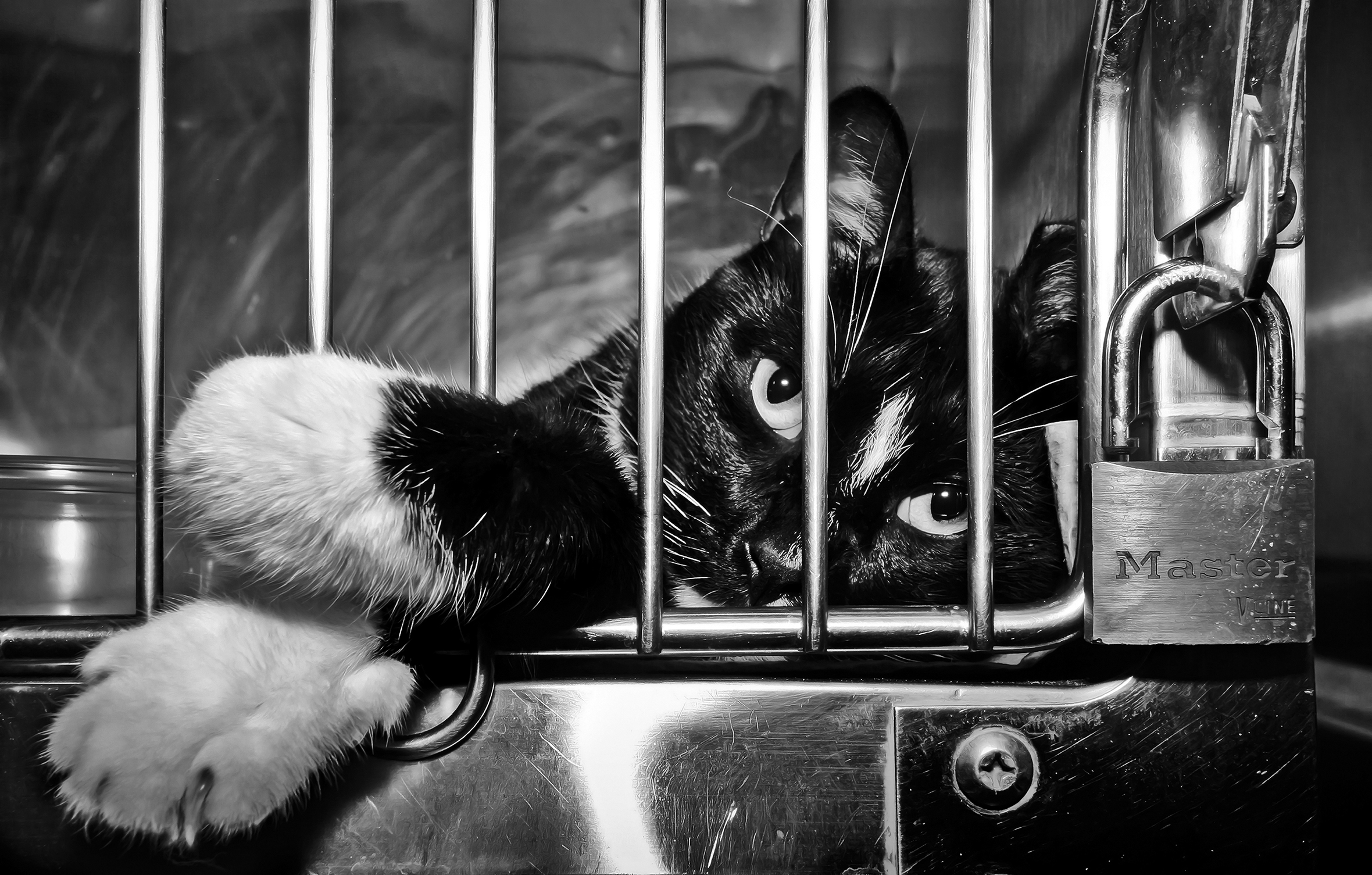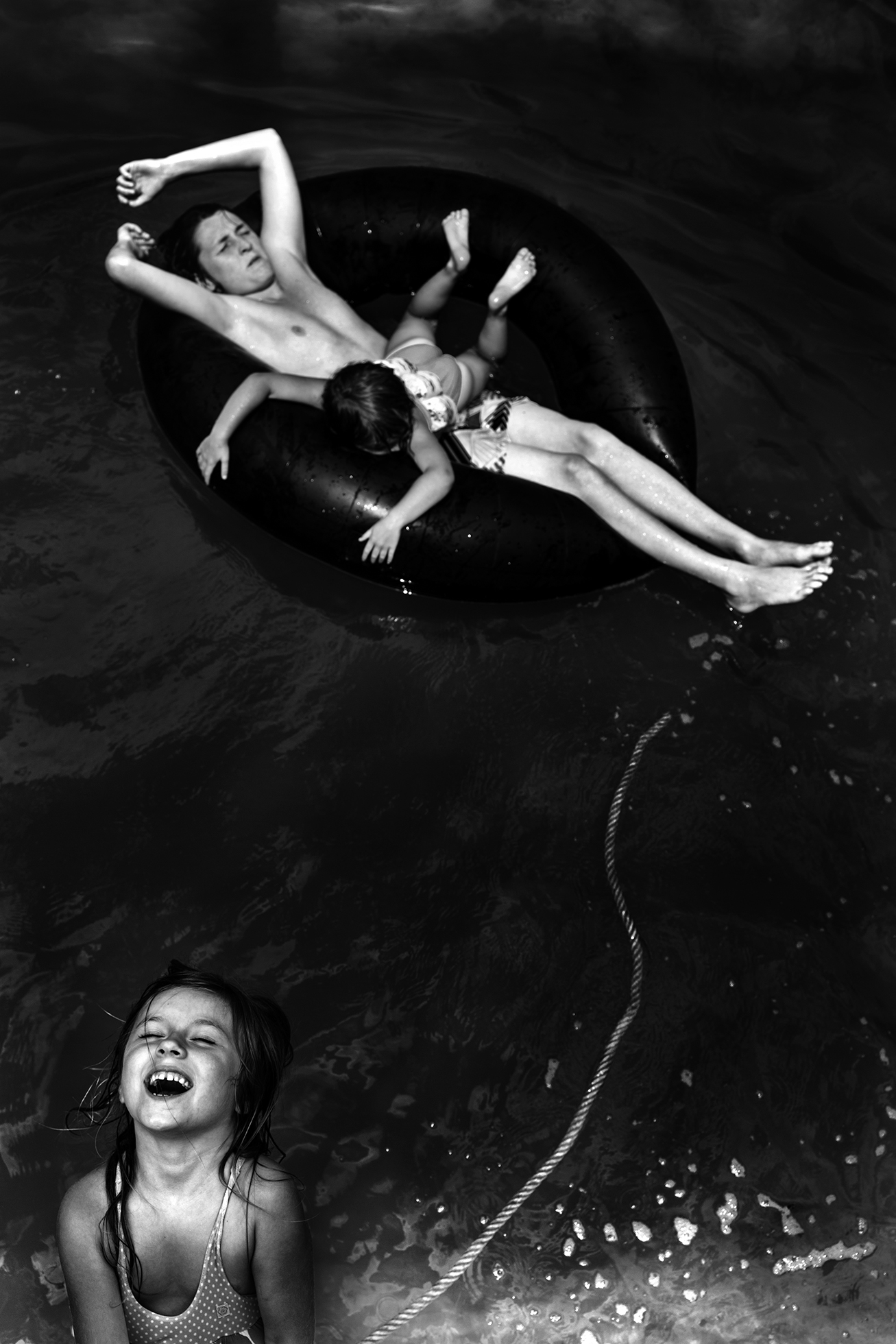We use cookies to improve our services and remember your choices for future visits. For more information see our Privacy Policy and Terms of Use.
Photo Essays That Tell a Story
Selections from the Archive
It wasn’t long after we chose “Yard Sales” as a Readers Write topic that our photo editor, Rachel J. Elliott, began talking excitedly—she talks excitedly about lots of things, but this especially so—about the perfect photo essay to accompany the section: Gloria Baker Feinstein’s “Estate Sale.” Feinstein photographed visitors to her family’s estate sale with the items they’d purchased: an oversized deck of playing cards, a smiley-face cookie jar, a goose-shaped lamp. At least, I think it’s a lamp. The chosen objects tell a story, but for me the bemused and sometimes joyful expressions on the faces of their new owners are the real draw.
We’re always happy when a photo pairs nicely with a piece of writing, and particularly when a whole photo essay can complement other work in the magazine. We’ve printed quite a few over the years. Below is a selection of photo essays to scroll through after you’ve read some of the pieces in our April issue.
Take care and read well,
Derek Askey, Associate Editor
Technology and The Sun have always been somewhat uneasy partners, and “Down in the Valley,” Finn Cohen’s interview with author and programmer Wendy Liu is no exception. Once you’ve finished their conversation about the tech industry’s power to divide us, you might also appreciate Gianpaolo La Paglia’s photo essay “Our Own Devices.” (I bet you can guess the devices to which the title is referring.)

© Gianpaolo La Paglia
Our Own Devices
After a few failed attempts to have conversations with friends who could not keep their eyes off their screens for more than ten minutes, I began taking photographs of people lost inside their phones. They weren’t hard to find, whether I was in New York City or Amsterdam, Dublin or New Delhi. Wherever I traveled, the devices were a consistent presence, a tool people use in nearly every aspect of their lives. I felt as if I was witnessing a global addiction.
—Gianpaolo La Paglia
March 2019Reading Leath Tonino’s “The Peaceful Circle—Year in a Wild Marsh,” a collection of viewer comments on a YouTube video, might leave you wishing you could feast your eyes on such a pristine piece of nature. Since the video was made up for the piece, however, you might try Marc Toso’s “Ancient Skies” photo essay, “the result of countless hours he has spent roaming the desert after dark with only a headlamp or the moon to light his way.”

© Marc Toso
Ancient Skies
Photographer Marc Toso has been exploring remote areas of the Southwest ever since he left Pennsylvania to go to college in New Mexico more than two decades ago. Toso uses long camera exposures to capture his spectacular images of nocturnal skies, often doing push-ups or squats to stay warm as he waits. Ruins and petroglyphs—mysterious images left in stone by early human cultures—are visible in the foreground of many of his images. The combination of ancient art, elemental desert landscapes, and star-filled skies helps create the sense that, as Toso says, “we are but momentary flashes of awareness on a tiny ball in a vast universe.”
—Ed.
June 2016In her essay “Surrogates,” Jennifer Bowen describes adopting a “skinny, despondent dog with the face of a greyhound, the body of a Lab, and the neck of a giraffe” from an animal shelter. Practically every staff member at The Sun is an animal lover—if you ever see me in person, be sure to ask me about my dog, Bosco, the apple of my eye—and it’s a subject we’ve covered with some frequency in the magazine. Part of that coverage included Mark Ross’s photo essay “Animal Shelter,” in which he “wanted to convey [the animals’] unique personalities as well as their loneliness and fear.”

© Mark Ross
Animal Shelter
I have always admired companion animals, and several years ago I decided to volunteer at a shelter in New York City. By law the animals there had to be killed if they were not adopted within a short period of time. So I started taking photographs of the animals and posting them on social media. Almost immediately the adoption rate at the shelter increased. These beautiful, abandoned creatures deserve to live out their lives in loving homes.
—Mark Ross
May 2017Chelsea Bowlby’s short story “Bridge Kid” describes a chaotic scene at a new acquaintance’s house, where a “group of kids lounged in the living room, and in the corner a couple under a blanket appeared to be having vigorous sex” and apparently unaccompanied children are told to “get some bread and go the fuck back to bed.” The story reminded me of the reaction to Alain Laboile’s photo essay of his children, “Where the Wild Things Are,” in which “schedules are flexible, rules are few, and clothing is optional.” One reader wrote “the conditions they live in are alarming.” Take a look and judge for yourself.

© Alain Laboile
Where the Wild Things Are
Trained as a sculptor, Alain Laboile first picked up a camera to take pictures of his whimsical sculptures of animals and insects, but after the birth of his fifth child, he began to focus the lens on his growing family at home. He and his wife, Anne, now have six children—four girls and two boys—and are raising them in a remote region of France. Laboile says his desire to document his children’s daily lives may have been inspired by the fact that he possesses only a single photo of himself from his own childhood. Many of his pictures show the children at play in the surrounding countryside, which they are encouraged to explore unsupervised. There isn’t a television to be found on the property, but there are plenty of wild creatures.
—Ed.
February 2016
We’ll mail you a free copy of this month’s issue. Plus you’ll get full online access—including more than 50 years of archives.
Request a Free Issue